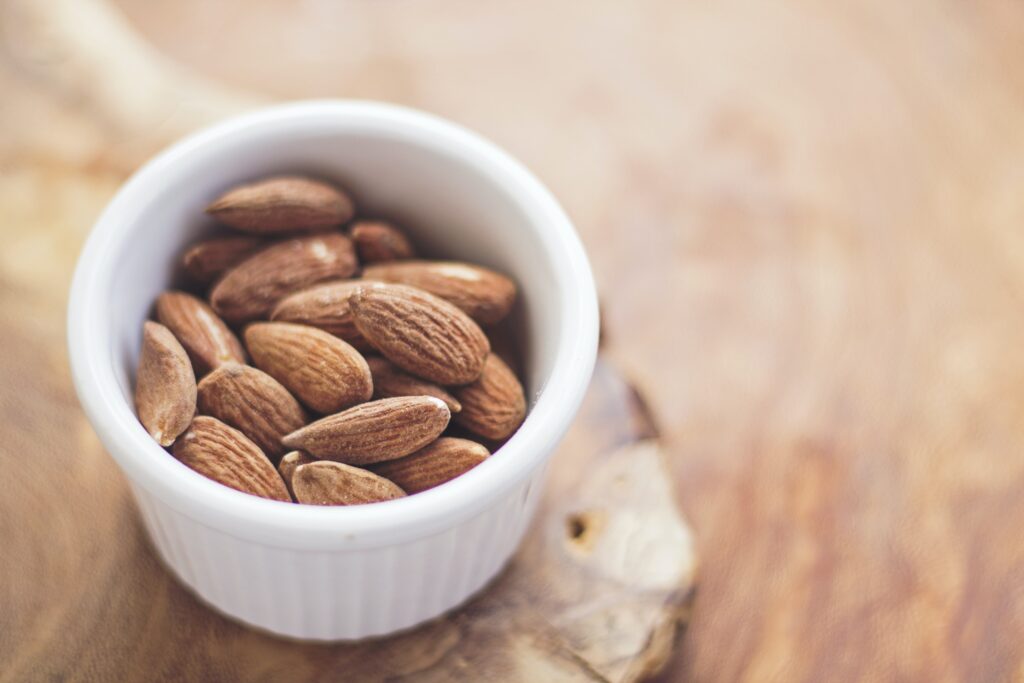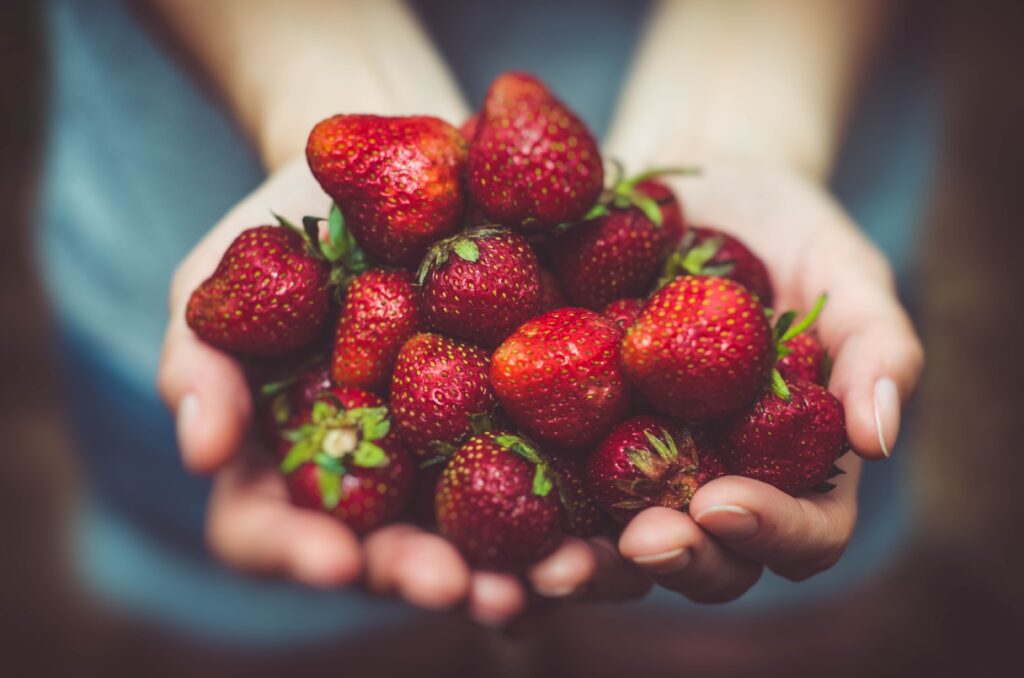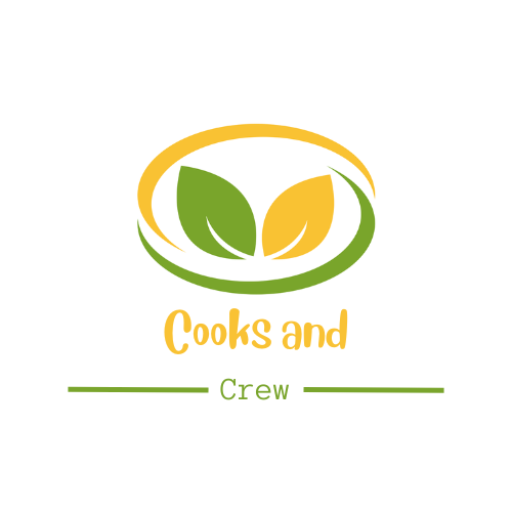
Whether you’re a seasoned chef or a novice in the kitchen, it’s important to prioritize safety while cooking. From preventing kitchen accidents to avoiding foodborne illnesses, this article offers a comprehensive guide on cooking safety tips. Covering everything from proper handling and storage of ingredients to safe cooking techniques, these tips will ensure that your culinary adventures are not only delicious but also hazard-free. So, let’s get acquainted with the essential precautions to take before you tie your apron and prepare to whip up a tasty meal!

Preventing Kitchen Fires
Keeping Flammable Items Away
When it comes to preventing kitchen fires, one of the essential steps is keeping flammable items away from any heat sources. This includes items such as paper towels, napkins, and plastic bags. Keep them far from the stove, oven, or any other cooking appliance. It’s also important to be mindful of curtains, dish towels, and other materials that could potentially ignite if they come into contact with a flame.
Using Proper Cooking Equipment
Using proper cooking equipment can significantly reduce the risk of kitchen fires. Make sure you always use appliances and cookware that are specifically designed for cooking. Avoid using makeshift tools or appliances that are damaged or worn out, as they can be potential fire hazards. Additionally, using the right size and type of pots and pans for each cooking task can prevent spills and the resulting fires.
Being Alert and Attentive
Being alert and attentive while cooking is crucial for preventing kitchen fires. It’s easy to become distracted, but it’s important to stay focused on your cooking at all times. Avoid leaving the kitchen while food is cooking, especially if you are using high heat or hot oil. If something in the kitchen does catch fire, having someone nearby who can respond immediately can make all the difference.
Avoiding Overheating Oils and Grease
Overheating oils and grease are leading causes of kitchen fires. When cooking with oil, it’s crucial to monitor the temperature carefully and avoid overheating it. Different types of oils have different smoke points, which is the temperature at which they start to smoke and potentially ignite. Always follow the recommended cooking temperatures and keep a close eye on the oil or grease while it’s heating. If you notice it smoking, turn down the heat or remove the pan from the heat source to prevent a fire.
Safe Handling of Knives and Sharp Objects
Choosing the Right Knife
Selecting the right knife for the task at hand is essential for safe handling. Each type of knife is designed for specific purposes, and using the wrong knife can be dangerous. For example, a serrated knife is ideal for slicing bread, while a chef’s knife is more suitable for chopping vegetables. Make sure to choose a knife with a sharp blade to minimize the risk of slippage and accidents.
Proper Knife Handling Techniques
Knowing how to handle a knife properly is crucial to prevent injuries. Always hold the knife with a firm grip but avoid putting too much pressure on the handle. Use a chopping board or a stable surface to cut ingredients, ensuring that it doesn’t slip. When cutting, keep your fingers away from the blade by using the proper grip, such as the “claw grip” technique. This technique tucks your fingers under while using your knuckles as a guide, minimizing the risk of accidental cuts.
Safe Storage of Knives
Proper storage of knives is essential for both safety and maintaining their sharpness. Never leave knives lying around on countertops or in the sink where they can be easily knocked over or grabbed unknowingly. Instead, invest in a knife block or magnetic strip to keep them organized and secure. When washing knives, be sure to dry them thoroughly before storing to prevent rusting. By storing knives safely, you reduce the risk of accidents and maintain their longevity.
Preventing Burns and Scalds
Using Oven Mitts and Pot Holders
Protecting your hands from burns and scalds is crucial when working in the kitchen. Always use oven mitts or pot holders when handling hot pots, pans, or baking trays. These heat-resistant accessories act as a barrier between your skin and the hot surfaces, preventing burns. Remember to use clean and dry oven mitts to ensure maximum safety and grip.
Proper Handling of Hot Pots and Pans
Whether you are transferring a hot dish from the stove to the oven or serving it to the table, it’s essential to handle hot pots and pans correctly. Use oven mitts or pot holders to grip the handles securely, ensuring a firm grasp. Be cautious of any steam that may escape when removing lids or uncovering dishes, as it may cause scalds. When setting down hot cookware, always use heat-resistant trivets or pot holders to protect your countertops or table from heat damage.
Avoiding Steam Burns
Steam burns can be just as painful and damaging as burns from direct contact with heat. To avoid steam burns, make sure to keep your face, hands, and other parts of your body away from the steam when opening pots or cooking appliances. When checking on food that is steaming, use caution and lift the lid away from yourself to prevent any sudden release of steam towards your face or body.
Preventing Spills and Splatters
Spills and splatters can lead to burns and potential fires, so it’s important to prevent them as much as possible. Ensure that pots and pans are stable on the stove burners and use lids or splatter screens when necessary. When stirring or mixing hot liquids or foods, do so slowly and gently to minimize the likelihood of splattering. Additionally, be mindful of any excess moisture or condensation on the outside of pots or containers, as it can pose a slipping hazard.
Avoiding Cross-Contamination
Separate Cutting Boards for Different Foods
Preventing cross-contamination is essential for maintaining food safety in the kitchen. One effective method is to use separate cutting boards for different types of foods. Designate specific cutting boards for raw meats, fruits, vegetables, and other types of ingredients. This helps prevent the transfer of harmful bacteria between different food items and reduces the risk of foodborne illnesses.
Proper Food Storage
Proper food storage is vital for preventing cross-contamination and ensuring food safety. Store raw meats, poultry, and seafood in sealed containers on the lowest shelf of the refrigerator to prevent their juices from dripping onto other foods. Use separate containers or bags for different types of food, and always label and date them to keep track of freshness. Be sure to regularly check and discard any expired or spoiled items to prevent contamination.
Washing Hands Frequently
Maintaining good hand hygiene is a simple yet effective way to prevent cross-contamination. Wash your hands thoroughly with warm water and soap before and after handling food, especially raw meats, eggs, or vegetables. Scrub your hands for at least 20 seconds, making sure to clean the backs of your hands, between your fingers, and under your nails. Hand sanitizers can be used in addition to handwashing, but they should not replace it entirely.
Cleaning and Sanitizing Surfaces
Regularly cleaning and sanitizing kitchen surfaces is crucial for preventing cross-contamination. After preparing each type of ingredient, clean cutting boards, countertops, and utensils with hot, soapy water. Use separate cloths or sponges for different areas to prevent the spread of bacteria. Additionally, sanitize surfaces with a food-safe disinfectant to kill any remaining germs. Regularly cleaning your kitchen helps maintain a hygienic environment and reduces the risk of foodborne illnesses.

Practicing Electrical Safety
Inspecting Electrical Cords and Appliances
Inspecting electrical cords and appliances is an essential step in ensuring electrical safety in the kitchen. Regularly check cords for any signs of wear, fraying, or damage. If you notice any issues, replace the cord or the entire appliance promptly. Avoid using appliances with exposed wires or loose connections. It’s also important to unplug small appliances when not in use to prevent the risk of electrical fires or accidents.
Avoiding Overloading Electrical Outlets
Overloading electrical outlets can be hazardous and potentially lead to electrical fires. To avoid this, spread out your kitchen appliances across different outlets rather than plugging them all into one. Be mindful of the wattage and power requirements of your appliances to prevent overloading the circuits.
Using Ground Fault Circuit Interrupters (GFCIs)
Installing Ground Fault Circuit Interrupters (GFCIs) in the kitchen is a proactive safety measure. GFCIs help protect against electric shock by quickly shutting off the power in the event of a ground fault. This is especially important in areas where water is present, such as near sinks or countertops. If your kitchen does not have GFCIs already installed, consider hiring a qualified electrician to install them.
Keeping Water Away from Electrical Appliances
Water and electricity are a dangerous combination, so it’s crucial to keep water away from electrical appliances in the kitchen. Avoid using electrical appliances with wet hands or near sinks filled with water. Ensure that countertops and other surfaces are dry before using any electrical equipment. This simple practice can prevent electrical shocks and potential accidents.
Safe Food Handling and Storage
Proper Thawing Techniques
Properly thawing frozen foods is essential for preventing bacterial growth and maintaining food quality. The safest method to thaw food is to place it in the refrigerator overnight. This allows the food to thaw gradually at a safe temperature. If you need to thaw food quickly, you can use the defrost setting on the microwave or place the sealed package in cold water, changing the water every 30 minutes. Avoid thawing food at room temperature, as it can promote bacterial growth and risk foodborne illnesses.
Cooking Food to Safe Internal Temperatures
Cooking food to the correct internal temperature is critical for killing harmful bacteria and reducing the risk of foodborne illnesses. Invest in a food thermometer to ensure accurate readings. Different types of food have different safe internal temperature guidelines. For example, poultry should be cooked to an internal temperature of 165°F (74°C), while ground meats should reach 160°F (71°C). Make sure to check the temperature at the thickest part of the food item.
Storing Leftovers Correctly
Properly storing leftovers is essential to prevent food spoilage and the growth of harmful bacteria. Allow cooked food to cool for no longer than two hours before placing it in the refrigerator. Divide leftovers into shallow, airtight containers to speed up the cooling process. Label and date the containers for easy identification and to keep track of freshness. Consume leftovers within a few days or freeze them for longer storage.
Avoiding Food Spoilage
To avoid food spoilage and waste, it’s important to be mindful of proper food handling and storage practices. Always check expiration dates and perishability of food items before using them. Store foods at the correct temperature, either in the refrigerator or freezer, to maintain freshness. Be aware of signs of spoilage, such as unusual odors, changes in color or texture, or the presence of mold. When in doubt, always err on the side of caution and discard any questionable food items.

Preventing Slips, Trips, and Falls
Maintaining Clean and Dry Floors
Keeping kitchen floors clean and dry is crucial for preventing slips, trips, and falls. Wipe up spills immediately using absorbent materials such as paper towels or clean cloths. Regularly sweep or vacuum the kitchen floor to remove any debris, which can cause accidents. Ensure that mats or rugs are securely fastened, as loose or wrinkled mats can pose a tripping hazard.
Using Non-Slip Mats or Rugs
Using non-slip mats or rugs in high-risk areas of the kitchen can significantly reduce the chances of slips or falls. Place these mats in front of the sink, stove, and food preparation areas, where water, oils, or other liquids may be present. Non-slip mats provide added traction and stability to help prevent accidents, especially in kitchens where cooking activities may result in spills.
Storing Items Properly and Avoiding Clutter
Proper storage and decluttering are essential for maintaining a safe kitchen environment. Store commonly used utensils, appliances, and ingredients within easy reach to avoid unnecessary reaching or overstretching, which can lead to falls. Keep the kitchen countertops clear of unnecessary items and avoid leaving objects on the floor. By organizing and decluttering your kitchen, you reduce the risk of tripping and, subsequently, potential injuries.
Proper Footwear in the Kitchen
Choosing suitable footwear is important to minimize the risk of slips, trips, and falls in the kitchen. Opt for closed-toe shoes with slip-resistant soles for maximum stability and traction. Avoid wearing loose or poorly fitting shoes that may cause you to trip. By wearing appropriate footwear, you provide your feet with the necessary support and grip to navigate the kitchen safely.
Using Fire Safety Equipment
Installing Smoke Detectors, Fire Extinguishers, and Fire Blankets
Installing essential fire safety equipment in the kitchen is vital for immediate response to potential fires. Place smoke detectors near the kitchen area to alert you promptly in case of smoke or fire. Keep a fire extinguisher within reach, preferably near the exit, and ensure that it is suitable for extinguishing kitchen fires. Additionally, consider having a fire blanket available to smother small fires or to protect yourself when needed.
Knowing How to Use Fire Safety Equipment
Having fire safety equipment is not enough – it’s crucial to know how to use it effectively. Familiarize yourself with the operation of fire extinguishers and fire blankets by reading the instructions and following any training provided. Practice using them appropriately to ensure that you are prepared in case of an emergency. Remember, in the event of a fire, prioritize your safety and evacuate the premises if necessary.
Regularly Checking and Maintaining Fire Alarms
Regularly checking and maintaining fire alarms is essential for their optimal functioning. Test smoke detectors monthly by pressing the test button and ensure that the batteries are working. Replace batteries at least once a year, or as instructed by the manufacturer. Clean any dust or debris that may accumulate on the detectors to prevent false alarms or malfunctions. By maintaining your fire alarms, you ensure early detection of potential fires and minimize risks.
Safe Handling of Hot Appliances
Avoiding Direct Contact with Hot Surfaces
When dealing with hot appliances, it’s crucial to avoid direct contact with hot surfaces to prevent burns. Never touch any part of an appliance that has been in use recently, as it might still be extremely hot. Always use handles or knobs to manipulate appliances, and be cautious of any exposed heating elements. By maintaining a safe distance from hot surfaces, you minimize the risk of burns or scalds.
Using Oven Mitts and Handles
Using oven mitts and handles is a fundamental practice for safely handling hot appliances. Whether you’re removing a dish from the oven or taking a pot off the stove, always use oven mitts or pot holders to protect your hands. These heat-resistant accessories provide a barrier between your skin and the hot surfaces. Additionally, ensure that appliance handles are secure and intact to prevent any accidents while using them.
Allowing Appliances to Cool Before Cleaning
Before cleaning or performing any maintenance on hot appliances, it’s important to allow them to cool completely. Trying to clean or handle a hot appliance can lead to burns or other injuries. Give appliances such as ovens, stovetops, or toasters ample time to cool down before attempting any maintenance or cleaning tasks. Follow the manufacturer’s recommendations for cooling times and ensure that surfaces are at a safe temperature before touching them.
Properly Ventilating the Kitchen
Proper ventilation in the kitchen is crucial, especially when using hot appliances. Adequate airflow helps to dissipate heat and prevents the accumulation of smoke, steam, or strong odors. Utilize range hoods or exhaust fans to remove airborne particles and maintain a comfortable cooking environment. Good ventilation also helps to reduce the risk of kitchen fires by preventing the build-up of flammable substances.
Childproofing the Kitchen
Keeping Pot Handles Out of Reach
For households with young children, it’s essential to keep pot handles out of their reach to prevent accidental burns and scalds. When using the stove, ensure that pot handles are turned toward the back of the stove or countertop, away from where children can reach or grab them. This simple precaution can help avoid accidental spills or overturning of hot liquids.
Securing Cabinets and Drawers
Securing cabinets and drawers is a necessary step in childproofing the kitchen. Install child safety locks or latches on cabinets and drawers within a child’s reach to prevent access to potentially harmful items such as sharp knives, cleaning products, or hazardous substances. These locks are easy to install and provide an added layer of protection to keep children safe while in the kitchen.
Educating Children About Kitchen Dangers
Educating children about kitchen dangers is essential for their safety. Teach them about the potential risks of hot surfaces, appliances, and utensils. Explain the importance of not touching items on the stove or countertop without adult supervision. Encourage open communication and answer any questions they may have. By raising awareness and providing education, you empower children to make safer choices in the kitchen.
Supervising Children in the Kitchen
Supervising children in the kitchen is crucial to ensure their safety and prevent accidents. Never leave young children unattended while cooking or performing any kitchen activities. Keep them within sight and reach, and maintain constant supervision. This allows you to promptly address any unsafe behaviors, correct potential hazards, and teach them appropriate kitchen skills as they grow older.
In conclusion, practicing kitchen safety is essential to prevent accidents, injuries, and potential fires. By following these tips and guidelines, you can create a safe and secure environment in your kitchen. Remember to always be alert, use proper equipment, and educate yourself and your family about potential dangers. By prioritizing safety in the kitchen, you can enjoy cooking with peace of mind and reduce the risk of any mishaps. Stay safe and happy cooking!
